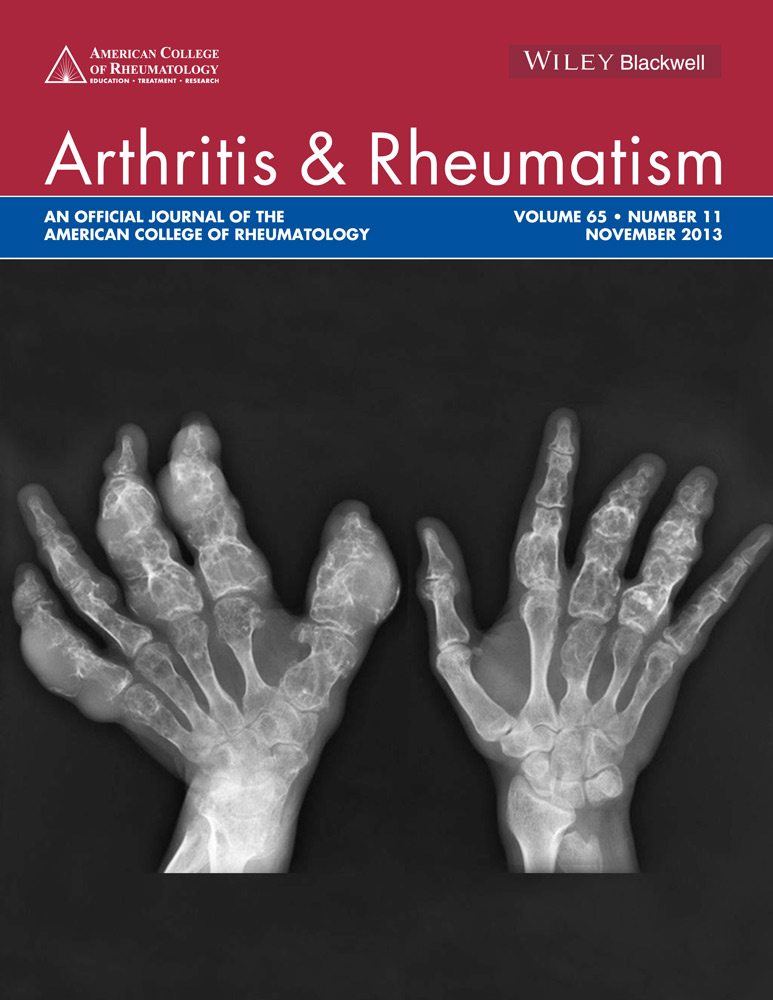ADAM15 Adds to Apoptosis Resistance of Synovial Fibroblasts by Modulating Focal Adhesion Kinase Signaling
Abstract
Objective
To study the contribution of ADAM15, a disintegrin metalloproteinase that is up-regulated in the rheumatoid arthritis (RA) synovial membrane, to the characteristic resistance of RA synovial fibroblasts (RASFs) to apoptosis induction by genotoxic stress or stimulation with proapoptotic FasL, which is present at high concentrations in RA synovial fluid.
Methods
Caspase 3/7 activity and the total apoptosis rate in RASFs upon exposure to the DNA-damaging agent camptothecin or FasL were determined using enzyme assays and annexin V staining. Phosphorylated signaling proteins were analyzed by immunoblotting. RNA interference was used to silence ADAM15 expression. NF-κB activity was determined by enzyme-linked immunosorbent assay.
Results
RASFs displayed significantly higher caspase 3/7 activity upon camptothecin and FasL exposure when ADAM15 had been down-regulated by specific small interfering RNAs. Upon FasL stimulation, RASFs phosphorylated focal adhesion kinase (FAK) and c-Src (Src), and activated phosphatidylinositol 3-kinase as well as the transcription factor NF-κB. This ADAM15-dependent, FasL-induced activation of antiapoptotic kinases and NF-κB was demonstrated by a marked reduction of apoptosis upon knockdown of ADAM15 protein expression. Inhibitors specifically interfering with FAK and Src signaling, such as FAK inhibitor 14 and dasatinib, potently induce apoptosis in RASFs, with significant enhancement by the silencing of ADAM15.
Conclusion
ADAM15 contributes to apoptosis resistance in RASFs by activating the Src/FAK pathway upon FasL exposure, rendering the FAK/Src signaling pathway an interesting target for potential therapeutic intervention in RA.




